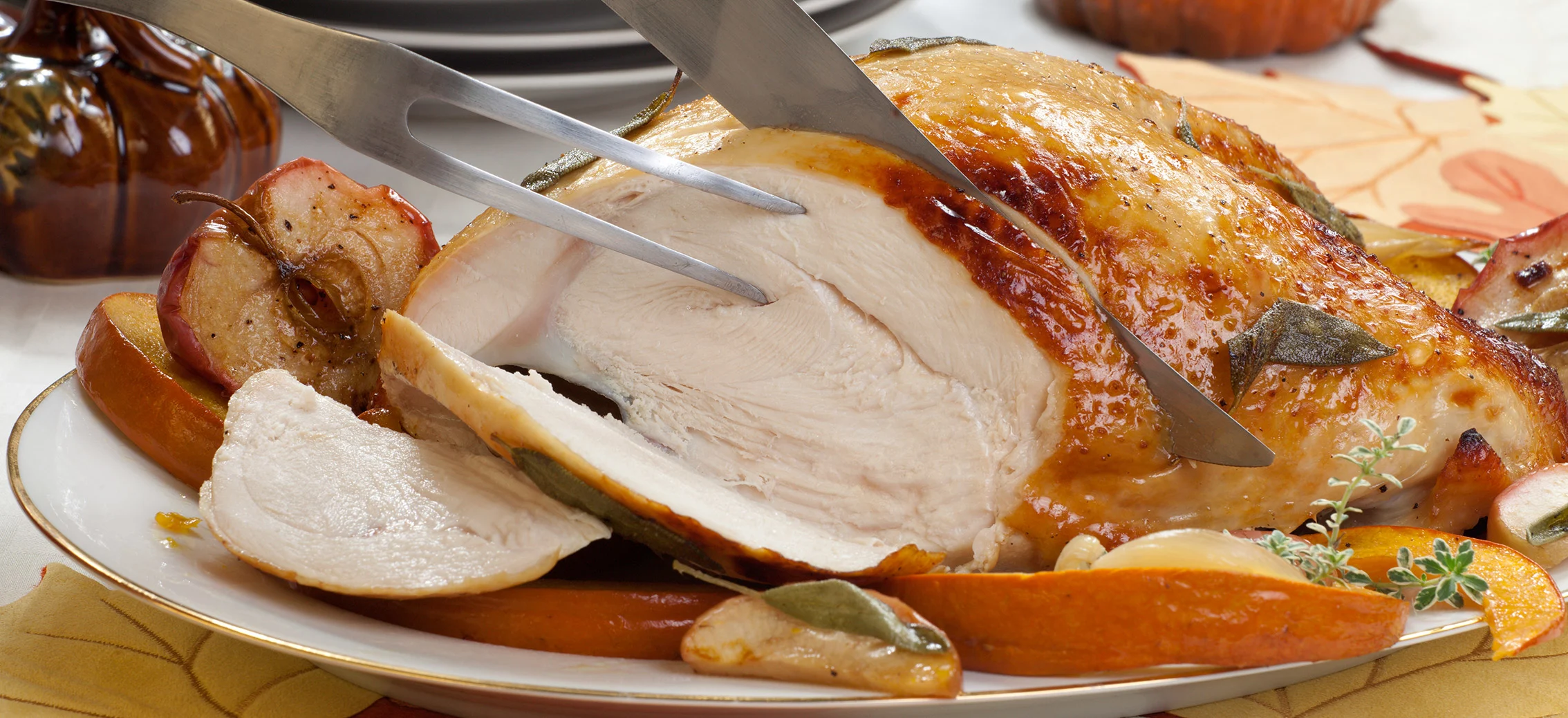How to Carve a Turkey
Tips & Articles
Easy Recipes for Fun Food
How to Carve a Turkey

In this Article:
If you do not know how to carve a turkey properly, you could ruin a perfectly cooked bird. The process is simple enough, but the right tools are needed to retain the turkey's juiciness and present the turkey beautifully. After your Thanksgiving or Christmas guests go home, and your leftovers are neatly packed in the refrigerator, it’s time to tackle your kitchen! Do not be surprised to see splatter, drips, and globs of turkey grease on the inside and outside of your stove! Use these cleaning tips to remove grease and make your stove sparkle.
This project is not geared toward children and is best suited for adults.
Tips for Turkey Carving
What You Need:
Cooked Whole Turkey
Large Serving Platter
10-Inch Slicing Knife (Sharpened)
Kitchen Shears
Large Fork, or a Slicing Fork
Bounty Paper Towels
Instructions:
In order to retain the juiciness and flavor of your cooked turkey, allow it to rest at room temperature for at least 30 minutes before carving it. This allows all of the cooked juices to redistribute. Don't worry, the turkey will still be warm.
Step Two: Tie the Turkey Legs Together
Start by using the kitchen shears to cut the string tying the turkey legs together. Empty out the cavity of any aromatics you used while cooking.
Step Three: Remove the Drumstick
Place the tip of your knife in between the thigh and the drumstick. Cut straight down through the joint to remove the drumstick. Repeat the same process on the other side. Removing the drumsticks will leave the thigh meat exposed; slice it away from the bone.
Step Four: Remove the Breast
•The most critical step in how to carve a turkey is removing the breast. To ensure that the breast is juicy and each piece has meat and skin, you want to remove each half of the breast in one piece. Find the backbone of the turkey.
•Place your knife against the backbone, on the inside of a breast half. Slice straight down to the bottom of the breast. Move your knife to the outside of the breast, then slice inward from the bottom of the breast until your slices meet. •The breast should be completely cut away from the carcass. Repeat with the other half of the breast. Slice each breast vertically into medallions.
Lastly, remove the wings by slicing through the joint, much like you did to remove the drumsticks.
To serve, use a large fork or a carving fork to arrange the turkey on a serving platter.
How to Remove Turkey Grease
Your turkey was a hit! Don't forget to clean up your workspace with Bounty paper towels after enjoying your Thanksgiving dinner. Use these cleaning tips to remove baked on grease and make your stove sparkle.
What You Need:
Empty Spray Bottle
Funnel
Lemon, Sliced in Half
White Vinegar
Hot Water
Dish Towel
Bounty Paper Towels
Instructions:
Step One: Create a Homemade Degreaser Solution.
Start by filling a small spray bottle 3/4 full with hot water. Next, squeeze the juice of a fresh, sliced lemon into the funnel. Top off the bottle with white vinegar. Hold the bottle with a dishtowel to avoid burning your fingers. Replace the spray top lid and give the bottle a swirl to mix.
Make sure your stove has cooled off. Spray the solution directly on greasy areas.
Step Two: Wipe Down the Stove Surface
Immediately, use Bounty paper towels to wipe the soft, melting grease off the stove surface. Continue spraying and wiping until no streaks remain. The acidity of the lemon juice and vinegar will help break apart the grease while the hot water will melt the congealed turkey grease.
For thick, baked-on stains, repeat the spraying and wiping process a few more times. Bounty paper towels are tough, so they can be used to scrub at tough grease stains, both on the stove and inside the oven.
The homemade cleanser is also safe to use on the oven's glass window. The strong odor of the white vinegar will go away once the cleaning liquid dries. Use these cleaning tips just a few hours after your meal, and the grease will wipe away easily.